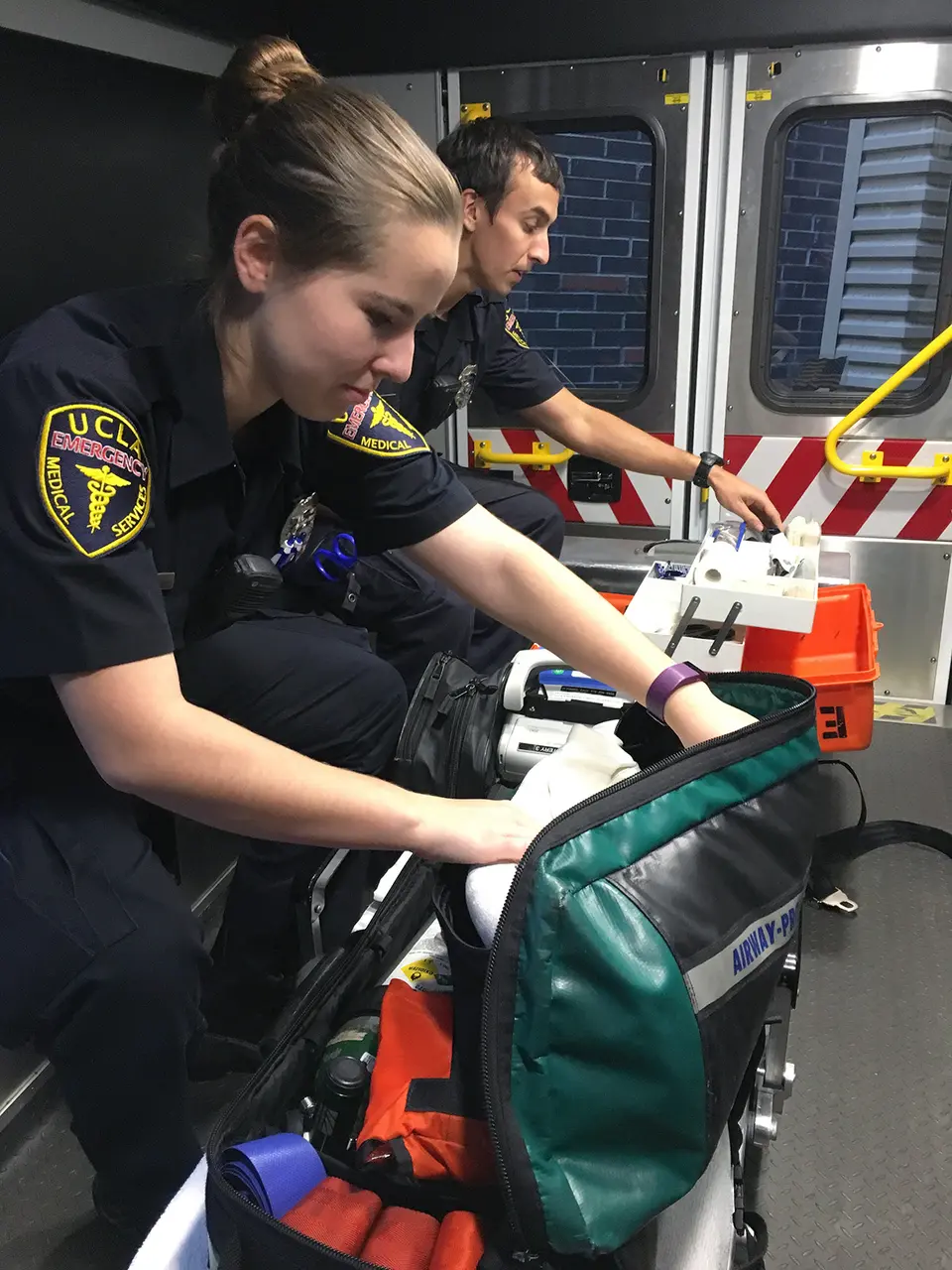Equipping EMS students with the right clinical kit is critical for their success in training and real-world application. Whether you’re an EMS program director or an instructor, ensuring students have high-quality, well-organized kits can significantly impact their learning experience and preparedness. A well-structured EMS clinical kit streamlines training, eliminates supply gaps, and enhances hands-on learning.
Here are seven essential tips to help you build the perfect EMS student kit for your program.
Photo by Daily Bruin. The Quad: UCLA EMTs discuss the benefits of their life-saving work, January 18, 2017.
1. Understand the Needs of Your EMS Program
Every EMS school has different requirements for clinical supplies. Some programs provide a strict list of required materials, while others allow flexibility in choosing certain tools. Before building your EMS school kit, ensure you have a clear understanding of the essential items your students need to succeed.
Consider:
- What skills will students be practicing?
- Will they be using their kits in classroom labs, clinical rotations, or both?
- Are there standardized supply lists, or does each instructor have unique preferences?
By identifying the core needs of your program, you can create a customized EMS student kit that ensures students are fully prepared for both training and real-life emergency scenarios.
2. Prioritize Quality and Durability
EMS students need to be confident in using their equipment, and that starts with reliable, high-quality tools. Subpar materials can hinder skill development and lead to frustration.
When choosing items for your clinical kits, consider:
✔ Stethoscopes with clear acoustics for accurate assessments
✔ Blood pressure cuffs with durable inflation bulbs and easy-to-read gauges
✔ Trauma shears that are sharp and sturdy enough to handle real-world scenarios
✔ Penlights with bright, consistent illumination
Selecting trusted, field-tested brands ensures students receive supplies that will last throughout their training and early career.
3. Keep Kits Organized and Ready for Use
One of the most overlooked aspects of an EMS student kit is organization. A cluttered, disorganized kit can slow down students during skills practice, while a well-structured kit improves efficiency and readiness.
Best practices for organization:
- Choose kits with labeled compartments to keep supplies easily accessible.
- Group items based on frequency of use (e.g., assessment tools in one pocket, trauma tools in another).
- Encourage students to regularly repack and check their kits to prevent missing items.
Providing an efficiently packed clinical kit not only prepares students for training but also sets a foundation for organized patient care in the field.
4. Ensure Kits Cover All Essential Training Materials
A complete EMS clinical kit should cover the full spectrum of skills students will practice in their training program. While some schools only include the basics, others may require additional supplies to align with their curriculum.
A well-rounded EMS student kit should include:
✔ Patient assessment tools – Stethoscope, blood pressure cuff, and penlight
✔ Trauma tools – Shears, tourniquets, and bandages
✔ Airway management supplies – Pocket masks and airway adjuncts (if required)
✔ Basic PPE – Gloves, eye protection, and face shields
If your program includes additional lab skills (such as IV training or wound care), consider offering customized EMS kits to meet your students’ specific needs.
5. Regularly Review and Update Kits
EMS protocols and equipment evolve over time. A kit that worked last year might be missing new best-practice tools this year. Annual kit audits help ensure your students always receive up-to-date, industry-standard supplies.
Key considerations:
- Check for expired items (e.g., certain medications, adhesive bandages, or disposable PPE).
- Update based on new teaching methods or evolving EMS guidelines.
- Seek feedback from instructors and students to refine kit contents for future classes.
Programs that regularly refine their clinical kits ensure students get the best tools to match modern EMS education.
6. Offer Digital Learning Resources Alongside Physical Kits
Today’s EMS students benefit from both hands-on tools and digital resources. Consider supplementing your clinical kit with online study materials that reinforce classroom learning.
Some great additions include:
- Digital study guides that break down patient assessment techniques.
- Video tutorials on proper equipment use (e.g., how to properly use a BP cuff).
- Access to EMS community groups for networking and peer support.
Combining physical tools with digital resources creates a more engaging, well-rounded learning experience.
7. Encourage Students to Practice Regularly With Their Kits
Even the best EMS school supplies won’t help if they stay in a backpack untouched. Encourage students to actively use their kits during training, study sessions, and even at home.
Ways to reinforce hands-on learning:
- Assign daily practice exercises using the patient assessment kit.
- Host peer-to-peer skills check-offs to boost confidence.
- Have students carry their kit as they would in the field to build familiarity.
By ensuring students use and maintain their kits properly, you set them up for success when they transition into real-world patient care.
Final Thoughts: Setting Your Students Up for Success
A well-designed EMS student kit does more than provide supplies it enhances learning, builds confidence, and prepares students for the field. By prioritizing quality, organization, and relevance, you can ensure your program equips students with everything they need to excel.
At MedTech, we specialize in custom EMS clinical kits tailored to your program’s exact needs. Whether you’re building kits from scratch or refining your current supply list, we’re here to help streamline the process.
Want to customize a clinical kit for your EMS program?
Get in touch with us at MedTechKits.com to create the perfect EMS student kit!

